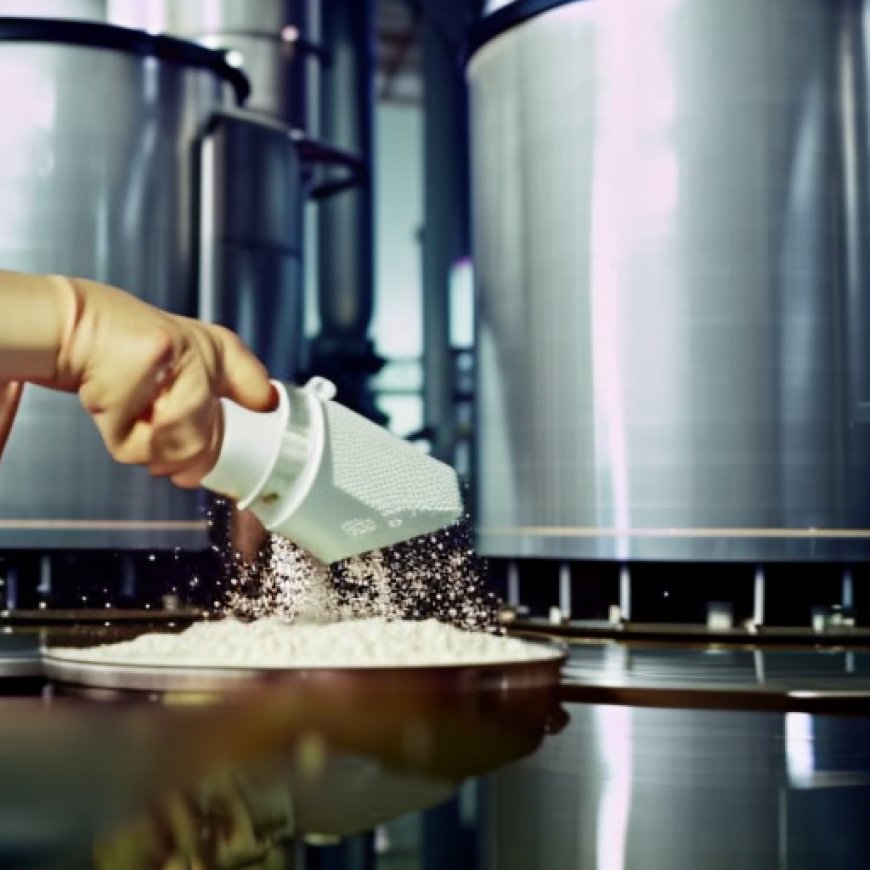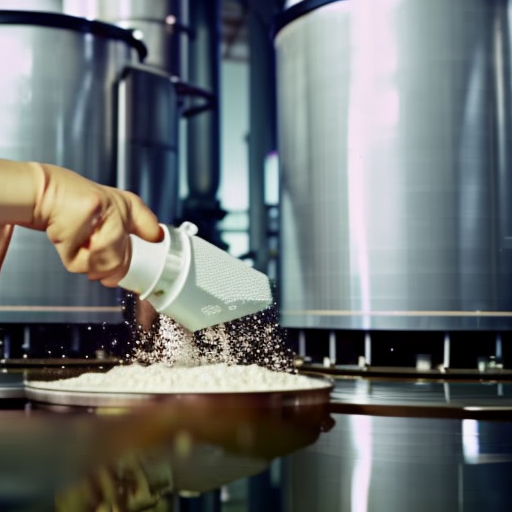Innovative Technology in Milk Powder Factory Effluent Treatment
Innovative Technology in Milk Powder Factory Effluent Treatment EnergyPortal.eu


Exploring the Role of Innovative Technology in Milk Powder Factory Effluent Treatment
In the world of dairy production, the management of milk powder factory effluent has always been a challenging task. The wastewater generated from these factories is rich in organic matter, nutrients, and other potential pollutants, which can cause significant environmental damage if not properly treated. However, recent advancements in technology have opened up new possibilities for more efficient and sustainable effluent treatment methods.
The Sustainable Development Goals (SDGs)
- SDG 6: Clean Water and Sanitation
- SDG 7: Affordable and Clean Energy
- SDG 9: Industry, Innovation, and Infrastructure
- SDG 12: Responsible Consumption and Production
- SDG 13: Climate Action
Advanced Biological Treatment Technologies
One of the most promising developments in this area is the use of advanced biological treatment technologies. These systems leverage the power of microorganisms to break down organic matter and nutrients in the wastewater, transforming them into less harmful substances. For instance, anaerobic digestion technology uses bacteria that thrive in oxygen-free environments to convert organic waste into biogas, a renewable energy source. This not only helps to reduce the environmental impact of the effluent but also provides an additional source of energy for the factory.
Membrane Bioreactor (MBR) Technology
Another innovative technology that is gaining traction in the milk powder industry is membrane bioreactor (MBR) technology. MBR systems combine conventional activated sludge treatment with membrane filtration, resulting in a high-quality effluent that can be reused in the factory. This technology offers several advantages over traditional treatment methods, including smaller footprint, higher effluent quality, and lower sludge production. Moreover, MBR systems are highly automated, reducing the need for manual monitoring and control.
Advanced Physicochemical Methods
In addition to these biological treatment technologies, advanced physicochemical methods are also being employed to treat milk powder factory effluent. For example, electrocoagulation is a technique that uses an electric current to remove suspended solids, heavy metals, and other pollutants from wastewater. This method is particularly effective in treating high-strength industrial effluents, and its efficiency can be further enhanced by combining it with other treatment processes.
The Role of Artificial Intelligence (AI) and Machine Learning
Moreover, the use of artificial intelligence (AI) and machine learning algorithms in effluent treatment is an emerging trend in the dairy industry. These technologies can be used to optimize the operation of treatment systems, predict potential issues, and provide real-time control. For instance, AI can be used to predict the performance of a biological treatment system based on various parameters, such as temperature, pH, and nutrient concentration. This allows for proactive adjustments to the system, improving its efficiency and reliability.
Conclusion
In conclusion, the use of innovative technology in milk powder factory effluent treatment is revolutionizing the dairy industry. Advanced biological and physicochemical treatment methods, combined with AI and machine learning, are providing more efficient and sustainable solutions for effluent management. These technologies not only help to reduce the environmental impact of dairy production but also contribute to the industry’s economic sustainability by reducing operational costs and creating new revenue streams. As these technologies continue to evolve, we can expect to see even more improvements in the way we manage milk powder factory effluent in the future.
SDGs, Targets, and Indicators in the Article
1. Which SDGs are addressed or connected to the issues highlighted in the article?
- SDG 6: Clean Water and Sanitation
- SDG 7: Affordable and Clean Energy
- SDG 9: Industry, Innovation, and Infrastructure
- SDG 12: Responsible Consumption and Production
The article discusses the management of milk powder factory effluent, which is directly related to water pollution and sustainable production practices. It also highlights the use of advanced technologies for effluent treatment, which aligns with the goals of promoting clean energy and innovation in industries.
2. What specific targets under those SDGs can be identified based on the article’s content?
- SDG 6.3: Improve water quality by reducing pollution, eliminating dumping, and minimizing release of hazardous chemicals and materials.
- SDG 7.2: Increase the share of renewable energy in the global energy mix.
- SDG 9.4: Upgrade infrastructure and retrofit industries to make them sustainable.
- SDG 12.4: Achieve environmentally sound management of chemicals and all wastes throughout their life cycle.
The article emphasizes the need for efficient and sustainable effluent treatment methods to reduce environmental damage, indicating a focus on improving water quality (SDG 6.3). The use of anaerobic digestion technology to convert organic waste into biogas aligns with the target of increasing the share of renewable energy (SDG 7.2). The adoption of advanced technologies like membrane bioreactors and electrocoagulation demonstrates efforts to upgrade infrastructure and make it more sustainable (SDG 9.4). Lastly, the article highlights the use of innovative methods to manage waste, contributing to the environmentally sound management of chemicals and wastes (SDG 12.4).
3. Are there any indicators mentioned or implied in the article that can be used to measure progress towards the identified targets?
- Effluent quality: The article mentions that membrane bioreactor (MBR) technology produces high-quality effluent that can be reused in the factory. Monitoring the quality of effluent can serve as an indicator of progress towards SDG 6.3.
- Renewable energy generation: The use of anaerobic digestion technology to convert organic waste into biogas provides a renewable energy source. Tracking the amount of biogas generated can be an indicator of progress towards SDG 7.2.
- Automation and control: The article highlights the automation of treatment systems, reducing the need for manual monitoring and control. The level of automation achieved can serve as an indicator of progress towards SDG 9.4.
- Reduction in pollutants: The article mentions electrocoagulation as an effective method to remove suspended solids, heavy metals, and other pollutants from wastewater. Monitoring the reduction in pollutant levels can be an indicator of progress towards SDG 12.4.
These indicators can be used to measure the effectiveness of the technologies and practices discussed in achieving the identified targets under the respective SDGs.
SDGs, Targets, and Indicators Table
| SDGs | Targets | Indicators |
|---|---|---|
| SDG 6: Clean Water and Sanitation | 6.3: Improve water quality by reducing pollution, eliminating dumping, and minimizing release of hazardous chemicals and materials. | Effluent quality |
| SDG 7: Affordable and Clean Energy | 7.2: Increase the share of renewable energy in the global energy mix. | Renewable energy generation |
| SDG 9: Industry, Innovation, and Infrastructure | 9.4: Upgrade infrastructure and retrofit industries to make them sustainable. | Automation and control |
| SDG 12: Responsible Consumption and Production | 12.4: Achieve environmentally sound management of chemicals and all wastes throughout their life cycle. | Reduction in pollutants |
Behold! This splendid article springs forth from the wellspring of knowledge, shaped by a wondrous proprietary AI technology that delved into a vast ocean of data, illuminating the path towards the Sustainable Development Goals. Remember that all rights are reserved by SDG Investors LLC, empowering us to champion progress together.
Source: energyportal.eu

Join us, as fellow seekers of change, on a transformative journey at https://sdgtalks.ai/welcome, where you can become a member and actively contribute to shaping a brighter future.







